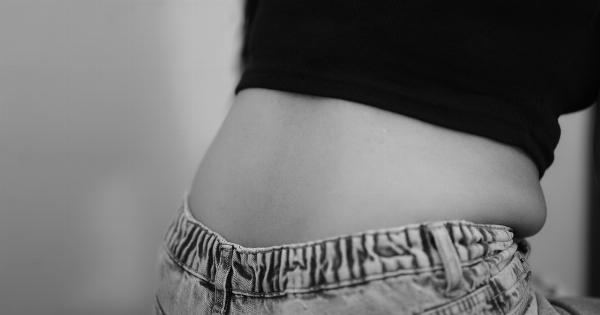Diabetes mellitus is a chronic metabolic disorder characterized by high blood sugar levels over an extended period. It affects millions of people worldwide, and its prevalence continues to increase.
Diabetes is a risk factor for various other chronic conditions, including cardiovascular disease, kidney disease, and neuropathy. Incontinence is one such condition that is more common in people with diabetes, especially women.
What is Incontinence?
Incontinence refers to the involuntary loss of urine or fecal matter. It can be a debilitating condition that impacts the quality of life, limiting social and physical activities, leading to psychological distress and depression.
Incontinence is a prevalent condition, with an estimated 50 million people affected worldwide.
The Connection between Diabetes and Incontinence in Women
There is a clear connection between diabetes and incontinence, particularly in women. Women with diabetes have an increased risk of developing incontinence, and the risk of incontinence rises with age.
Various mechanisms may contribute to this connection, including:.
1. Damage to the Nerves (neuropathy)
Diabetes can damage the nerves that control the bladder and muscles that regulate urine flow. This damage can lead to loss of bladder control and affect the ability to sense when the bladder is full.
It can cause urinary retention, which increases the risk of urinary tract infections (UTIs), bladder stones, and kidney damage. Neuropathy can also affect the muscles around the rectum and anus, leading to fecal incontinence.
2. Weakened Pelvic Floor
The pelvic floor muscles support the bladder, uterus, and rectum, helping to control the flow of urine and fecal matter. Diabetes can weaken these muscles, leading to urinary or fecal incontinence.
Studies have shown that women with diabetes have a higher prevalence of pelvic floor disorders, including urinary and fecal incontinence.
3. Increased Risk of Infection
People with diabetes are more prone to infections, particularly UTIs. The high levels of glucose in the urine can create an ideal breeding ground for bacteria, leading to constant UTIs and incontinence.
Incontinence also increases the risk of UTIs, which can further complicate the condition.
4. Obesity
Obesity is a well-known risk factor for both diabetes and incontinence. The extra weight can place pressure on the pelvic floor and weaken the bladder muscles, leading to incontinence.
Studies have shown that women with diabetes and obesity are more likely to develop urinary incontinence than those without either condition.
The Types of Incontinence Associated with Diabetes
There are two main types of incontinence associated with diabetes:.
1. Urinary Incontinence
Urinary incontinence is more common in women with diabetes than men. Diabetes-related neuropathy can lead to the loss of bladder control, causing leakage, urgency, and even complete voiding of the bladder.
Women with diabetes are also more likely to have stress urinary incontinence, a condition in which activities like coughing, laughing, or sneezing cause accidental leakage.
2. Fecal Incontinence
Fecal incontinence is the involuntary loss of stool or fecal matter. It is a less common type of incontinence but may be more prevalent in women with diabetes.
Diabetes-related neuropathy can affect the muscles and nerves that regulate bowel movements, leading to fecal incontinence, constipation, and diarrhea.
Treatment and Management of Incontinence in Women with Diabetes
Managing incontinence in women with diabetes involves addressing the underlying cause and managing the symptoms. Treatment options include:.
1. Diet and Lifestyle Changes
A healthy diet and lifestyle can help manage diabetes and incontinence. Losing weight, eating high-fiber foods, and avoiding irritants like caffeine or alcohol can help reduce incontinence symptoms.
Women with diabetes should also monitor their blood sugar levels to prevent further nerve damage.
2. Medications
Various medications can help manage incontinence symptoms, depending on the type and severity of the condition.
These include anticholinergics, which help reduce the urge to urinate, and alpha-adrenergic agonists, which help strengthen the urinary sphincter muscles. For fecal incontinence, medications such as loperamide can help regulate bowel movements.
3. Physical Therapy
Pelvic floor exercises, also known as Kegels, can help strengthen the muscles in the pelvic floor, improving bladder and bowel control. Physical therapists can also use biofeedback techniques to help patients gain better control over these muscles.
4. Surgery
In some cases, surgery may be necessary to correct incontinence, especially if other treatments have been unsuccessful. Surgical options include slings or artificial sphincters for urinary incontinence, or sphincteroplasty for fecal incontinence.
Conclusion
Incontinence is a common condition that affects millions of people worldwide, with women more impacted than men. While it has many causes, diabetes is a risk factor for both urinary and fecal incontinence in women.
Understanding the connection between diabetes and incontinence can help healthcare providers create better treatment and management plans for women living with these conditions. With the right care, women with diabetes and incontinence can enjoy a better quality of life, reducing the social and physical impact of this debilitating condition.





























